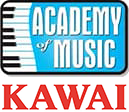How To Tune A Piano
When you purchase a piano, there is one type of maintenance that is essential to its quality and longevity: tuning. It takes time, patience, a trained ear, and a lot of practice to master the art of tuning. It involves a lot more mechanical know-how and precision than tuning a guitar. But by learning to tune a piano yourself, you can save money on hiring someone else to do it. Better yet, you’ll be keeping [...]


